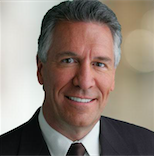Automated patient enablement platforms are the most effective way to reduce burnout amongst clinicians by relieving them of day-to-day admin work.
The Covid-19 Pandemic exacerbated an already growing crisis of burnout amongst healthcare professionals. Despite displaying high levels of resilience, one in five healthcare workers have quit their job during the pandemic, and an additional 31% have considered leaving. Physicians already spend around 16 minutes on admin per patient (just in the EHR), adding up to a significant portion of their day and contributing to the work overload plaguing the industry.
Automated patient enablement platforms offer a solution by reducing the time spent on administrative tasks, benefiting clinicians and patients alike.
Key Takeaways
- Patient enablement platforms are an effective way to automate day-to-day administrative tasks to free up clinician time.
- With less admin work on their plates, clinicians are less likely to suffer burnout.
- As a result of automated patient enablement platforms, doctors can spend more time with patients and streamline communication, leading to better health outcomes.
What Does an Automated Patient Enablement Platform Do?
When it comes to healthcare, there is no shortage of administrative tasks to track. From taking care of billing paperwork to scheduling follow-up appointments, much of the healthcare teams spend significant time the administrative side of the practice. Automated patient enablement platforms take much of this burden off healthcare providers by handling time-consuming day-to-day administrative tasks.
What is Patient Enablement?
Patient enablement is a process where healthcare providers empower their patients to take an active role in their care and recovery process.
Healthcare providers in the past have largely treated patients as passive recipients of their services. With the growing focus on patient-centered care, clinicians have realized that empowering patients is the most effective way to provide the best possible care. When a patient fully understands their diagnosis and has a clear comprehension of their treatment plan and steps to ensure successful outcomes, they are able to take an active role in their health and recovery. This has been referred to as “patient enablement” or “patient-directed healthcare,” and is a proven model for improving patient health outcomes.

Patient enablement is also a way to make it easier for patients to navigate the health care system. It uses technology to connect patients with the right people, services, and information they need. It can help patients with everything from scheduling appointments to finding the right medication.
What is an Automated Patient Enablement Platform?
One of the most effective ways to empower your patients is with automated patient enablement platforms. These platforms can be referred to as “patient portals”, “virtual assistants”, or “care coordination platforms”, are software systems designed to connect patients with their medical jouirneys, providing insights, communication, and activities at each step. The unique nature of automated platforms allows for a level of customization that is difficult or impossible through manual systems and paper instructions, resulting in a much more effective patient experience.
By freeing up clinician time to focus on the important interpersonal interactions, these platforms improve the quality and experience of care for patients, as well as reduce the burden on doctors. This lets clinicians provide the best care possible to their patients, which in turn leads to better patient outcomes and a better experience for patients. Patient enablement platforms are a key component in the emerging care coordination model, which is revolutionizing the way care is delivered.
How Clinicians Benefit When You Relieve Them of Day-to-Day Admin Work
Here are three ways that clinicians and patients directly benefit from automated patient enablement platforms:
1. Prevent Burnout
Physician burnout is a serious problem in the healthcare field. It’s responsible for a large number of health care professionals abandoning their practices, compromising the ability of patients to receive timely care.

The feeling can be debilitating; you’re not able to provide the best care to your patients, your relationships with colleagues and friends suffer, and you begin to doubt your abilities as a healthcare provider. While the symptoms of burnout are different for everyone, the root cause is the same: too much work, too little support, and too much responsibility. Preventing burnout starts with rethinking the work, determining which work is best performed through human interaction and which is best through automation.
Collecting payment, scheduling follow-up visits, and keeping track of paperwork for each of your patients is a never-ending task. These responsibilities don’t have to take up so much of your time. Instead, automate some of your day-to-day tasks so that you can focus on the patient-centric aspects of your job. Many practices have already streamlined billing and collection practices through digital interfaces, but there is still a gap with form collection, education, check-ins, and other activities.
With automated patient enablement platforms, you can reduce the amount of time you spend on the administrative tasks associated with providing patients with the care they need. This not only prevents burnout, but it also allows you to focus more on patient needs and improve their outcome.
2. Spend More Time with Patients
As a healthcare provider, your top priority is doing everything you can to ensure your patient’s health and well-being. Providing the best possible care for your patients often requires a significant amount of time and dedication. Automated patient enablement platforms are designed to help you spend more time providing care to your patients instead of performing day-to-day administrative work. This gives you more time to build a relationship with your patient and connect on an emotional, intellectual, and motivational level.
3. Streamline Communication
As your patients progress through their healthcare journey, they will need to communicate with you and other members of your healthcare team. Automated patient enablement platforms provide a secure platform that allows you to seamlessly communicate with your patients and other members of the team. Communication comes in many forms: patient questions, quick updates on conditions and recovery, delivery of tailored education, reminders of dietary restrictions, just to name a few.
A well-designed platform allows all types of communication to happen easily. This can be especially useful if members of the team are scattered across different locations.
Automate Your Day-to-Day Admin with Wellbe
An investment in Wellbe’s Automated Patient Enablement Platform, ConnectedCare(™) is an investment in the future of your practice. By automating daily admin you protect your staff from burnout and improve the patient experience and help to grow your practice.
Learn how Wellbe can automate your admin work.


 The epitome of an entrepreneur, Mark has seen the peaks and valleys of starting, operating, and assuming the risks of a new venture. He’s come up against payroll, had a few bad hires, and even swept the floors early on. Collectively, Mark’s companies have done over $360 million in sales and raised more than $38 million in venture capital, and he has successfully bought and/or sold eight companies.
The epitome of an entrepreneur, Mark has seen the peaks and valleys of starting, operating, and assuming the risks of a new venture. He’s come up against payroll, had a few bad hires, and even swept the floors early on. Collectively, Mark’s companies have done over $360 million in sales and raised more than $38 million in venture capital, and he has successfully bought and/or sold eight companies. James believes technology, when creatively applied, can improve our life experiences. Intrigued by the amazing potential for internet and mobile technology to engage us all, James created a business model to reshape personal health management.
James believes technology, when creatively applied, can improve our life experiences. Intrigued by the amazing potential for internet and mobile technology to engage us all, James created a business model to reshape personal health management. Mike Splinter, an electrical engineer and innovator, has played a major role in driving advances in the high tech industry, with more than four decades of executive leadership experience including 12 years with Applied Materials, Inc. where he was served as chairman and CEO, and over 20 years with Intel, where he was executive vice president of sales and marketing, and executive vice president of the Technology and Manufacturing Group.
Mike Splinter, an electrical engineer and innovator, has played a major role in driving advances in the high tech industry, with more than four decades of executive leadership experience including 12 years with Applied Materials, Inc. where he was served as chairman and CEO, and over 20 years with Intel, where he was executive vice president of sales and marketing, and executive vice president of the Technology and Manufacturing Group. Mr. Baldwin was most recently Chairman and CEO of Baxa Corporation, a leader in devices, systems, and software for the handling, packaging, and tracking of fluid medications in a critical care setting. Under his leadership from 1997 until its sale to Baxter Corporation in 2011, the company sales grew from $25 million to over $170 million. As CEO, he led the eight-member board of directors and led a minority recap resulting in Goldman Sach’s private equity group owning 27% of the company. He was also an early investor and lead director in Pharmacy OneSource, an innovative software-as-a-service business that had a successful exit in 2010.
Mr. Baldwin was most recently Chairman and CEO of Baxa Corporation, a leader in devices, systems, and software for the handling, packaging, and tracking of fluid medications in a critical care setting. Under his leadership from 1997 until its sale to Baxter Corporation in 2011, the company sales grew from $25 million to over $170 million. As CEO, he led the eight-member board of directors and led a minority recap resulting in Goldman Sach’s private equity group owning 27% of the company. He was also an early investor and lead director in Pharmacy OneSource, an innovative software-as-a-service business that had a successful exit in 2010.